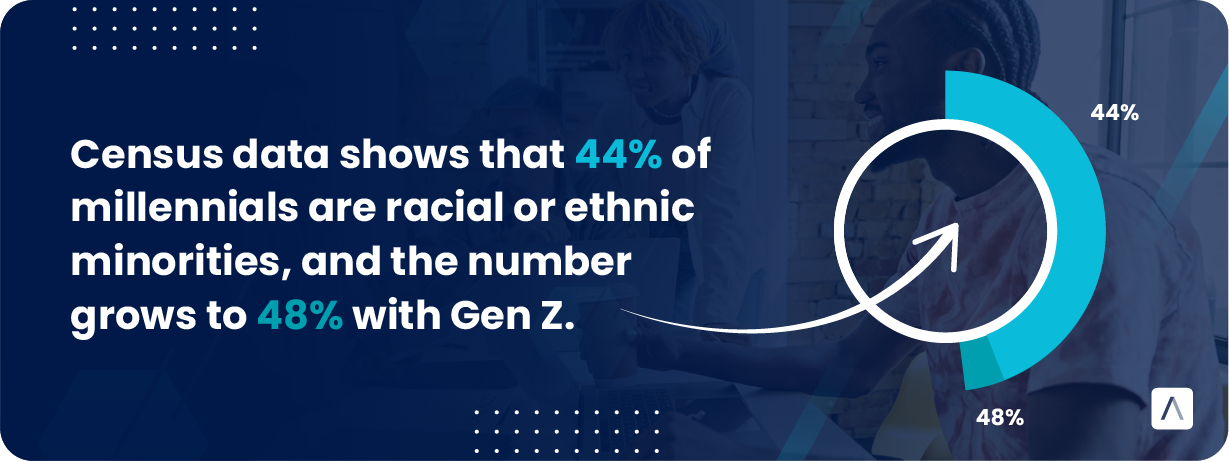Picture this: a grand concert hall, anticipation buzzing in the air. The conductor raises their baton, and… a lone violinist begins to play. Competent? Sure. Beautiful? Maybe. But exciting, innovative, truly groundbreaking? Probably not.
That’s the risk you run with a homogenous workforce. A talented team is essential, but so is diversity. This blog is about the power of unbiased hiring, where every employee adds a new, different piece to create a masterpiece. We’ll explore how diverse teams fuel creativity, innovation, and ultimately, success.
Building an Inclusive Interview Process: Strategies for Unbiased Hiring and Talent Acquisition
Creating an inclusive interview process fosters diversity and promotes equality within your organization. By structuring your interviews thoughtfully, you ensure that all candidates have a fair chance. It also means you won’t miss out on someone who is really great.
Unbiased hiring not only benefits candidates, it contributes to an innovative workplace. It does more than that, however. It helps your new hires feel like they’re safe in the workplace. If you tend to hire younger employees, you must focus on creating a workforce that looks like them. Why? Census data shows that 44% of Millennials are racial or ethnic minorities, and the number grows to 48% with Gen Z.
But how can you do it? Follow these steps and you’ll be on your way.

1. Structure Your Interview Process
When building an inclusive interview process, structuring it effectively is key.
Begin by outlining the steps of the interview process, focusing on consistency. This helps create a fair playing field and reduces bias. How? You’re giving them all the exact same experience.
To do it, add multiple types of interview questions. These different types can include:
- Behavioral questions
- Situational questions
- Technical assessments
In doing this, you’re able to evaluate candidates from different angles. Each stage should have specific objectives to assess skills, experience, and cultural fit. Tie back your questions to each of those areas.
When you do interviews, ask the same questions. This helps you keep things balanced and you’ll be able to compare apples to apples.
2. Implement Scorecards for Evaluation
When creating an inclusive interview process, implementing scorecards for evaluation is a game-changer. These structured evaluation tools provide clear criteria for assessing candidates. It helps the hiring team focus on being objective. It also gives them the structure they need to keep the interview moving.
Each interviewer rates candidates on the scorecard, leading to more accurate, unbiased evaluations. This method promotes transparency and accountability within the hiring process. When your hiring team uses a scorecard, they are working to eliminate their biases. Unconscious biases pop up in hiring, even if we don’t want them.
Incorporating scorecards into your interview process can enhance objectivity and minimize unconscious biases.
3. Utilize an Applicant Tracking System for Team Evaluations
The easiest step to becoming more inclusive is to find an Applicant Tracking System (ATS). This allows for a more structured, organized approach to team evaluations. By using an ATS, you ensure that all team members have the same information to evaluate candidates.
How does it do this? An ATS streamlines communication between team members, providing a centralized platform for feedback. This transparency promotes accountability and helps minimize biases in the decision-making process.
Not all systems are created equally, however. Your applicant tracking system should be geared toward what you’re looking for in a candidate. For example, there are applicant tracking systems for hourly hiring, applicant tracking systems for diversity hiring, and general applicant tracking systems that catch them all.
4. Create a Comfortable Environment for Candidates
Creating a comfortable environment for candidates is another easy step you can take.
Start by setting up the interview room with a welcoming atmosphere. You can do this in many ways – think about lighting, temperature, and seating arrangements. Small details make a big difference in easing nerves and promoting open communication.
From there, you’ll want to:
- Greet candidates warmly when they arrive.
- Offer water or refreshments.
- Provide clear directions on what to expect during the interview process.
Encouraging a relaxed demeanor from the start can help candidates feel more at ease and able to showcase their true capabilities.
Remember: Creating a comfortable environment isn’t just about physical surroundings. It’s also about your attitude and approach. Be empathetic, attentive, and respectful throughout the interview. Not only will it go a long way during the interview process, it will help throughout someone’s tenure.
5. Minimize Small Talk for Unbiased Interviews
Minimizing small talk plays a significant role in ensuring fairness and equality.
This might seem strange, but small talk may introduce bias into the interview process. It leads to making decisions based on personal connections rather than qualifications. Just because someone is “similar” to you doesn’t mean they’ll be the best hire.
By focusing on relevant topics related to the job requirements, interviewers create a more structured, objective evaluation process.
This approach avoids distractions that could sway judgments. It lets candidates show their skills and experiences. Creating a professional environment where conversations center around the candidate’s abilities and accomplishments can lead to more equitable hiring decisions.
6. Assess Candidates in Various Contexts
It’s essential to evaluate candidates in various contexts. This means going beyond traditional interviews and observing how they perform in different scenarios. Consider incorporating role-playing exercises or practical tasks that mirror real job responsibilities.
By doing so, you can get a more comprehensive understanding of their skills and abilities. Another approach is to assess candidates in group settings or collaborative projects. This allows you to observe how they interact with others, communicate ideas, and contribute to a team dynamic. These insights provide valuable information about teamwork skills and compatibility with company culture.
Additionally, consider conducting interviews at different times of day or in diverse environments to see how candidates adapt and perform.
7. Establish a Diverse Interview Panel
Having a diverse interview panel is crucial for ensuring unbiased hiring and creating an inclusive interview process. In fact, it might be the most important step.
If candidates see a reflection of themselves in the interviewers, they might feel comfortable. Different perspectives from panel members can help in assessing candidates more fairly. For example, consider bringing in people from different:
- Backgrounds
- Departments
- Ages
- Experience-levels
- Work environments
What can you do now?
Remember that creating an inclusive interview process is not just about checking boxes. It’s about fostering an environment where all candidates have equal opportunities. Embracing diversity and promoting fairness will not only attract top talent! It also contributes to building a more equitable workplace culture.
Ready to get started with an ATS that can help you make your process more equitable? Click here to schedule a demo.
Our focus? On your success.
Schedule a demo, or learn more about Mitratech’s products, services, and commitment.





